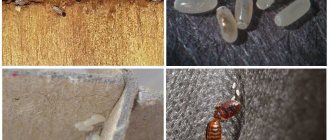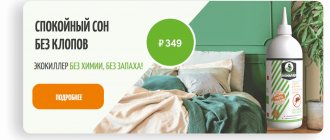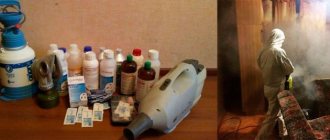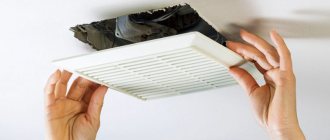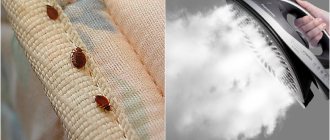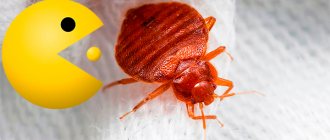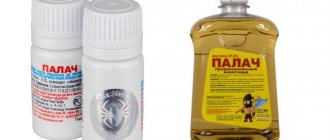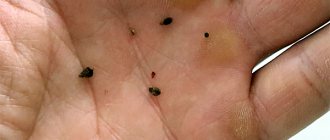Ammonia against bedbugs is one of the most effective methods in the fight against “uninvited guests.” Toxic drugs are not an option for insect baiting for everyone, but ammonia is an accessible, inexpensive, and practically safe way to solve the problem.
To confirm the effectiveness of ammonia in the fight against parasites, it is worth understanding the principle of action of the composition, its pros and cons.
It would be a good idea to learn how to use ammonia correctly to ensure results.
Rules of application
There are several options for using ammonia against bedbugs:
- Pour into small vessels and leave where parasites are most common. It is important to place containers in such a way that they remain out of the reach of children and pets.
- Add ammonia to a container of water to wash floors. They also add a little denatured alcohol to kill bedbugs and use kerosene. The composition is poured into the cracks. A cotton swab soaked in the substance is placed inside the sofa, in the closet, bedside table, under the mattress.
After the anti-bedbug alcohol has been used for its intended purpose, the exterminator must leave the premises (it is better to go outside).
Otherwise, a person may experience a migraine, dizziness, and difficulty breathing . It’s a good idea to rinse your mouth with clean water, wash your face with soap, and wash your clothes.
How to use ammonia
- 1) Wash floors and baseboards with a solution (1 part ammonia, up to 7 parts water), preferably every day, this will repel insects such as bedbugs, ants, silverfish, cockroaches
- Cotton swabs soaked in the product are placed in bedding areas (under mattresses, sheets, at the foot of the bed), in sofas they can be placed in sliding mechanisms.
- A small amount of alcohol is added when washing bedding.
- Place open containers out of reach of animals and children to repel insects.
The advantages of this method
- low price
- availability of the product
Cons - toxic, highly likely to harm health
- dubious results in killing insects
- low repellent properties
- Risk of damaging household items
- To obtain the result, repeated processing is necessary.
We do not recommend using ammonia as a means to kill bedbugs; use it only for preventive purposes.
Source
Are they afraid
Answering the question of whether bedbugs are afraid of alcohol, we can answer unequivocally in the affirmative. The substance does not kill pests, but only drives them away. Parasitic organisms do not like the strong smell of the substance.
For bedbugs, ammonia is a significant irritant; it does not allow them to continue living in the apartment - the insects try to leave their previous habitat.
In some cases, only active movement of insects between rooms is observed.
Tansy
Another type of plant that can repel bed bugs is tansy. This is a fairly common meadow plant with small yellow flowers collected in clusters of inflorescences. A decoction of tansy is actively used by gardeners and gardeners to treat crops against pests. For many insects, tansy is poison.
However, tansy is unable to destroy bed bugs, since these insects do not eat grass, but feed only on human blood. Of course, if an individual gets into the tansy decoction, it will most likely die.
In this case, a substance poisonous to the insect will enter the insect’s body through the respiratory tract. However, simply inhaling the air in which the smell of tansy is in the air will not kill the insect.
Tansy, like wormwood, acts on bedbugs as a repellent, that is, the grass does not kill blood-sucking insects, but repels them. Thus, the herb helps provide household members with a restful sleep at night for some time.
What you need to know before processing
Ammonia against bedbugs should be used with caution. Before starting treatment, it is necessary to remove all residents and pets from the apartment (house) (the composition is lethal for pets). Only the person who intends to carry out the treatment remains in the affected area.
When using ammonia, it is important to maintain the proportion of components: water and alcohol in the composition. Recommended dosage: 3 tbsp. l. per liter of water.
Preventing apartment infestation
In order not to wonder how to get rid of bedbugs at home, you should pay attention to preventing the appearance of bedbugs.
Measures to prevent the infestation of an apartment by parasites include several points:
- Carrying out regular cleaning: washing floors, cleaning furniture, washing household items.
- Identification of gaps, cracks in the wall, filling them with a sealing compound.
- Inspection of any pieces of furniture delivered from store warehouses and other residential premises.
- Elimination of sanitary and technical defects.
- Carrying out preliminary disinfestation at the time of moving into a new apartment.
- Using a vacuum cleaner when cleaning hard-to-reach places.
- Carrying out timely repairs in the apartment (house): wallpapering, eliminating cracks and crevices in the walls, fixing baseboards.
- Regular washing of linen and household items.
- Awareness of the main signs of pest infestation: bite marks, remains of dried shells, visual contact, dead individuals.
Compliance with these measures will help prevent the infestation of insects and relieve homeowners from fighting parasites.
“Weak points” of annoying bloodsuckers
Each harmful insect finds its home where all conditions for its successful existence and reproduction are met. If you change any factors, the parasite will become uncomfortable, which means that it will soon leave its “home” place. Let's try to figure out what the habitat of bedbugs is and what features their bodies have.
Features of bedbugs and their requirements for a new place of residence:
Thermoregulation processes do not occur in the body of these parasites. Sudden temperature changes can not only spoil the health of the bug, but even kill it altogether.
Therefore, insects choose unventilated areas for themselves.
Important! The insect's body is able to adapt to temperatures from -10 to +45 degrees Celsius; going beyond these indicators is detrimental to bedbugs. Some folk remedies for bedbugs at home involve the use of strongly odorous substances
Because
Bedbugs communicate with each other using odors; they cannot tolerate foreign odors. So where geraniums grow, incense sticks are lit, or there are sprigs of lavender in a vase, the likelihood of uninvited guests is too small.
- Bedbugs choose places that are difficult for people and pets to reach, in other words, they strive to ensure safety for themselves and their offspring. The shells of hungry individuals cannot be crushed, but after eating food, the bodies of insects lose their former hardness and become vulnerable.
- Even if the perimeter of the room is treated with chemicals, bedbugs may not pay attention to it. Eggs and their “parents” have amazing immunity to many poisons; in addition, a certain concentration of disinfectants can contribute to the active reproduction of “settlers”. In this regard, insects may well locate their nest near the treated area.
Bedbug nest located under the sofa upholstery
After we have identified the weak points of annoying pests, it’s time to figure out how to get rid of bedbugs using folk remedies.
Advantages and disadvantages
Ammonia for bedbugs in an apartment, like any folk remedy, has a number of advantages and disadvantages.
They are shown in the table below:
| pros | Minuses |
| — the composition is practically harmless to health, since it is characterized by a low level of toxicity - alcohol is available. The product can be purchased at a pharmacy (in a small container) or at a gardening supply store (in large quantities) — it is possible to choose any volume of the substance (from 10 to 500 ml) - ammonia has a strong smell, but dissipates well — the composition does not leave marks on the surface of furniture and other objects | - no effect of alcohol on eggs protected by a compacted shell — impossibility of damaging the respiratory organs of parasites - relative effectiveness of the product: some insects may remain immune to the composition and continue to reproduce |
We are talking about a fairly effective folk remedy; it is able to demonstrate the expected result with an insignificant pest infestation.
If we are talking about a large population of insects that has settled in an apartment, it is worth turning to supportive methods of controlling bedbugs.
Critical temperatures
Unlike many other household parasites, bedbugs are quite resistant to low temperatures, and in modern homes it is not possible to lower the temperature in the room so that the parasites die without consequences for electrical appliances and piping. Bedbugs become more passive even when the temperature drops to 10°C; when the temperature drops, the bedbugs hibernate and can withstand temperatures down to -10°C for a short time, and at temperatures below -20°C the parasites die within a few minutes. If the living space cannot be frozen to such a temperature, then it is advisable to hang bedding and clothes outside on cold winter days so that the parasites die.
Bedbugs are more sensitive to high temperatures and die at 55-60 °C. Of course, you can’t walk around the house with an open flame looking for bedbugs, but you can use steam generators that are used to humidify rooms. Steam should be applied to the bed and nearby furniture and carpets, and also try to find the lair of parasites and destroy it.
Similar methods
As “insurance” when controlling pests with ammonia, it is advisable to use the following means:
| Means | Action and application |
| Kerosene | Pests are afraid of the smell of kerosene. It prevents insects from breathing by blocking air transport. The parasite does not die. In order to demonstrate the best effect, the substance must be in its pure form (not diluted) and combined with naphthalene |
| Denatured alcohol (technical alcohol 90%) | The product is effective in the fight against adults, larvae and eggs. Denatured alcohol cannot be used directly in the apartment - only pest nests must be treated. The substance is highly flammable, highly toxic and can cause severe coughing. |
| Vinegar | The basic advantage of such a product is its safety for human health when used externally. The natural component can repel or destroy insects. You will need to treat the surfaces of the furniture with vinegar (you should use a cotton pad or cloth). The substance is diluted with water and used in its pure form. |
| Turpentine | The substance is flammable and toxic. Insects are frightened by the specific aroma of turpentine. Before starting to work with turpentine, you must wear protective gloves and leave the room after using the product. If the chemical gets on the skin, the area should be treated with soap. |
| Vodka | Vodka kills bedbugs on the same principle as industrial alcohol. However, it is less dangerous |
With the help of the given available means, it is possible to ensure the extermination of parasites. Among the most effective means that kill bedbugs are not only vodka, kerosene, turpentine, etc. This list can be continued with less toxic means: camphor oil, wormwood, tansy, etc.
Essential oils to fight bedbugs
The persistent specific aroma of essential oils can protect a person from bedbug bites and reduce the number of insects in the room. Cloves, geranium, basil, tea tree, eucalyptus, rosemary are plants from which essential oils are prepared, which are effectively used against bedbugs. Indian margosa oil is widely used to combat blood-sucking insects.
There are several ways to fight bedbugs using essential oils: by applying the drug directly to the skin, by spraying the essential oil in the room, and by using an aroma lamp. Such methods will get rid of annoying insects and prevent their appearance.
Important! Lavender, or rather lavender oil, is the best remedy that should be used to treat bed frames, bedside tables and which should be sprayed indoors.
Reviews
If you evaluate reviews of the use of ammonia in baiting bedbugs, you can draw a conclusion about the relative effectiveness of the product.
Some representatives remain faithful to traditional methods and note fairly good processing results. Others, on the contrary, consider the measure useless and even aggravating: pests not only do not leave the home, but also begin to actively move around the apartment in search of “shelter.”
The opinion of experts on this matter is clear: it is impossible to get rid of bedbugs using folk remedies, including ammonia, especially if we are talking about a massive infestation of insects. The best option is to use methods exclusively as part of prevention.
When identifying signs of pests living in the house, it is better to immediately move on to the “heavy artillery”.
The most effective method in this case will be professional help from SES employees: they will not only find the cause of the problem, but will also select the most effective pest control remedy for the case.
Thus, ammonia is a relatively effective, practically safe remedy for bedbugs. The smell of the substance is frightening, but does not kill insects. It is important to follow safety precautions before and after using the method. The effect of ammonia depends on the degree of infestation of the apartment (house) with bedbugs.
Alternative or additional means to combat bloodsuckers include: vodka, technical alcohol, vinegar and a number of others.
Conscious and regular prevention against bedbugs will protect residents from unwanted neighbors and save them from searching for solutions to an unpleasant problem.
Ammonia for bed bugs? We use ammonia to kill bedbugs.
Let's start with the fact that bed bugs are very resistant to poisons.
Ammonia is quite toxic, many people are interested in whether it is possible to kill bedbugs using ammonia at home? Ammonia is a white transparent liquid, an aqueous solution of ammonium hydroxide (10% ammonia concentrate), has a pungent odor. Ammonia is sold at pharmacies or household chemical stores. It comes in pure form, diluted and in the form of various bleaches. It is produced from nitrogen and hydrogen. It has many uses in everyday life and medicine; with the help of ammonia you can destroy fermentation in products, add it as a fertilizer, kill bacteria, and freshen the air in a room. Ammonia is also used as a cleaning agent in the kitchen and bathroom, it helps get rid of dirt and stubborn stains.
In this article we will look at whether it is worth poisoning bedbugs with this product.
We have already found out that ammonia and its vapors are very toxic, so we want to warn you that ammonia, in high concentrations, is harmful to living organisms and dangerous; if the vapors are inhaled, it can cause respiratory arrest; if it comes into contact with the skin, it can cause a severe burn, it is especially dangerous for children and pets.
Therefore, when carrying out work, it is necessary to observe safety precautions.
Use PPE (personal protective equipment) (goggles, gloves, mask, respirator)
When carrying out work, open the windows, it is necessary to ventilate before visiting
Do not forget that ammonia can damage woolen carpets and synthetic materials, and stains can form on bed linen.
Ammonia is toxic and its toxicity should lead to the death of bedbugs.
But there are certain factors that influence the final result.
- concentration of the substance (the higher the concentration, the better the effect, but more dangerous for people and animals) Maintain a balance to make the product effective. Typically, up to 7 parts of water are added to one part of ammonia. But you can change this ratio to suit your preferences, depending on your experience.
- This product will not kill a large number of insects (ammonia is best used as a prophylactic against bedbugs or after treatment with insecticides), the opposite effect is possible, the bedbugs will simply scatter throughout the apartment.
- The stage of infection of the room with bedbugs also affects (use at the initial stage can lead to loss of time, bedbugs can multiply during this time)
- The product can be used as a weak repellent against bedbugs, ants, and cockroaches.



